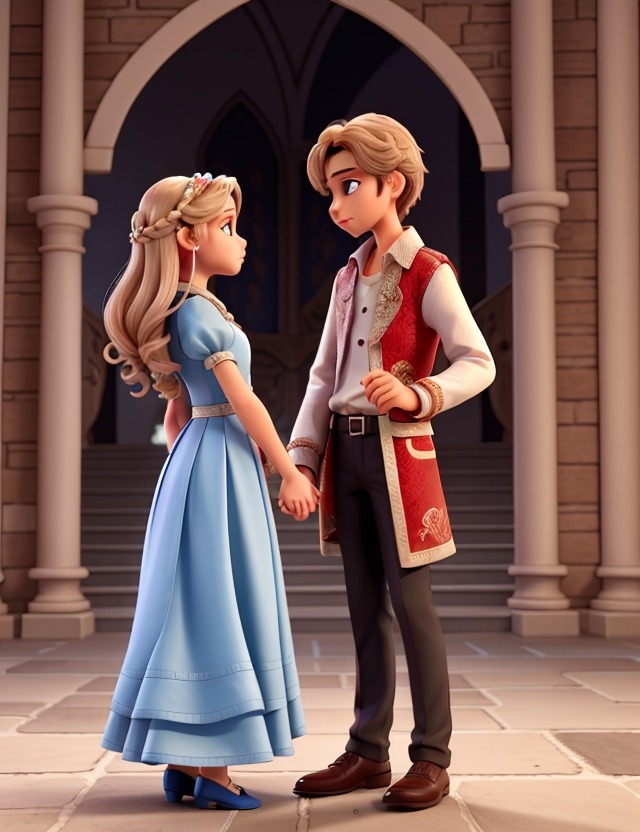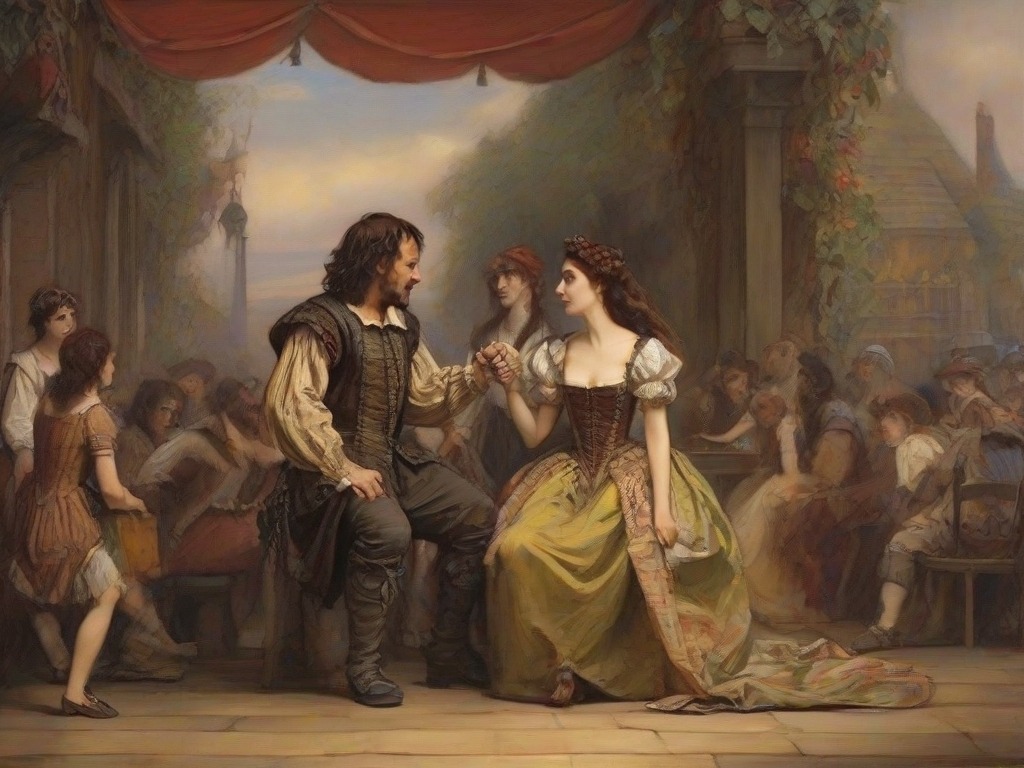The romance genre is a beloved category of short stories for kids, captivating their hearts with tales of love, friendship, and adventure. Romance stories often weave enchanting and heartwarming narratives that keep young readers immersed in the magical world of emotions.
The allure to imagination in romance stories stems from the tender and exciting nature of the plots. Children are drawn to the unfolding love stories, joining the protagonists on their journeys, which not only sparks their imagination but also enhances their empathy and understanding of relationships. The enchanting scenarios presented in romance stories allow kids to dream and explore the boundless possibilities of love within the narrative.
Curiosity becomes a driving force in the romance genre for young readers. Children naturally possess a curiosity about relationships and emotions, and romance stories, with their sweet twists and turns, encourage them to follow the characters’ romantic escapades with eagerness. This genre provides an avenue for kids to experience the joy of love and friendship, fostering a love for heartwarming challenges and connections.
Romance Short Stories Genre: Examples
Best Romantic Stories of all Time
Romance is a genre that captivates young readers with its enchanting tales of love, friendship, and adventure. Here are three exemplary works in the romance genre for kids, each showcasing its unique elements and illustrating the genre’s broad appeal, diversity, and enduring relevance.
Friendship Stories in English with Pictures
Romance Short Stories Genre: Authors
Some notable authors of the romance genre for kids include:
- Enid Blyton: Blyton, a prolific children’s author, is known for her enchanting stories that often feature themes of friendship and adventure. Series like “The Famous Five” and “The Secret Seven” explore the bonds of friendship among young characters, creating heartwarming tales that resonate with young readers.
- Beverly Cleary: Cleary is celebrated for her relatable and authentic portrayals of childhood experiences. In books like the “Ramona” series and “Beezus and Ramona,” Cleary explores the dynamics of family relationships and friendships, offering young readers a glimpse into the challenges and joys of growing up.
- Judy Blume: Blume’s novels often delve into the emotional landscape of adolescence, addressing topics such as friendship, first crushes, and self-discovery. Books like “Are You There God? It’s Me, Margaret” and “Forever” explore the complexities of relationships and emotions in a way that resonates with young readers.
- Kate DiCamillo: DiCamillo is known for her heartwarming and emotionally resonant stories. “Because of Winn-Dixie” and “The Tale of Despereaux” feature themes of friendship and love, captivating young readers with tales of courage, compassion, and the power of connection.
- Sarah Dessen: Dessen’s contemporary young adult novels often explore themes of friendship, family, and romance. Books like “The Truth About Forever” and “Just Listen” delve into the complexities of relationships, offering relatable stories that resonate with teenage readers.
These authors have made significant contributions to the romance genre for kids by creating stories that celebrate the magic of friendship, love, and positive connections. Through their relatable characters and heartwarming narratives, these authors have left a lasting impact on young readers, fostering a love for the enchanting world of romance.
Romance Short Stories Genre: History
The romance genre has a rich history that spans centuries, evolving to capture the hearts of readers across different cultures and periods. The roots of romance can be traced back to ancient tales of love and mythology, where epic love stories were passed down through generations.
In more recent history, the romance genre gained prominence during the 19th century, with authors like Jane Austen and the Brontë sisters crafting timeless tales of love and societal expectations. The Industrial Revolution and changing social dynamics contributed to the rise of romantic narratives that explored the complexities of relationships against the backdrop of societal shifts.
Landmark works in the genre include Austen’s “Pride and Prejudice” (1813), a classic romance novel that explores the dynamics of love, class, and societal expectations. The 20th century saw the emergence of diverse subgenres within romance, ranging from historical romance to contemporary love stories.
Romance stories for kids often feature themes of friendship, kindness, and acceptance. Authors like Enid Blyton and Beverly Cleary have left an indelible mark on children’s literature, introducing young readers to the joy and innocence of childhood romances.
In recent years, the romance genre has expanded to include various subgenres such as fantasy romance, adventure romance, and multicultural love stories. The exploration of diverse relationships and themes has become a hallmark of contemporary romance for young readers.
Romance Short Stories Genre: Characteristics
The key characteristics of the romance genre for kids include a focus on heartwarming relationships, the exploration of emotions, and the element of adventure. Language in romance stories is used to create a sense of warmth and connection, often through the portrayal of tender moments and sweet gestures.
- Plot in the romance genre typically revolves around young protagonists discovering the magic of friendship and love. The story progresses through heartwarming interactions, shared adventures, and the overcoming of challenges.
- Characters in romance stories often include relatable young protagonists, friends, and family members who play a crucial role in the unfolding of the love story.
- Tone in the romance genre can range from sweet and uplifting to adventurous and whimsical, depending on the specific subgenre. Romance stories for kids often have a more innocent and joyful tone, focusing on the beauty of emotions and connections.
- Typical themes in the romance genre include the power of friendship, the joy of discovering emotions, and the importance of acceptance and understanding. The topic of love is presented in a way suitable for young readers, emphasizing the purity and innocence of childhood relationships. Messages in romance stories often include the value of kindness, the beauty of genuine connections, and the importance of empathy.
Romance books are particularly appealing to kids because they tap into their natural curiosity about emotions and relationships. The genre allows them to experience the magic of love and friendship, encouraging them to appreciate the beauty of connections and emotions in a heartwarming and age-appropriate manner.
Romance Short Stories Genre: Benefits
Reading the genre of romance can have several benefits for kids. It not only enhances their reading comprehension, vocabulary, and emotional intelligence but also fosters empathy, creativity, and a positive outlook on relationships.
Firstly, reading romance books requires children to engage with emotionally rich plots and characters, improving their reading comprehension skills. They learn to empathize with the characters, understand their feelings, and appreciate the nuances of relationships. This process helps them develop emotional intelligence and enhances their ability to navigate complex social situations.
In terms of vocabulary, reading romance exposes children to a wide range of words and expressions related to emotions and relationships. They encounter terms like friendship, kindness, and love, which contribute to building their emotional vocabulary and enable them to express their feelings more effectively.
Reading romance stories offers kids the opportunity to experience the joy of positive connections and supportive relationships. Romance can be a powerful tool in teaching children about kindness, understanding, and the importance of treating others with respect. Positive portrayals of relationships in literature contribute to shaping a child’s perspective on friendship and love in a wholesome and uplifting manner.
Romance Short Stories Genre: Tips
Reading
- Explore various subgenres within romance, such as friendship tales, family stories, and adventure romances. This will provide a diverse range of stories that cater to different interests within the romance genre.
- Discuss the emotions and relationships portrayed in romance stories with young readers. Encourage them to share their thoughts and feelings about the characters and their experiences, fostering open conversations about emotions and connections.
- Introduce age-appropriate romance stories that align with the developmental stage of young readers. Consider themes that resonate with their experiences and provide positive portrayals of relationships.
- Create a cozy reading environment for kids to enjoy romance stories. Whether through bedtime reading or dedicated reading sessions, setting the right atmosphere enhances the overall reading experience.
Writing
- Encourage kids to write their own short romance stories. Provide prompts that explore themes of friendship, kindness, and adventure, allowing them to express their creativity and imagination.
- Emphasize the importance of character development in romance storytelling. Encourage young writers to create relatable characters with distinct personalities, fostering empathy and emotional engagement.
- Explore diverse perspectives in romance storytelling. Encourage kids to consider different cultural backgrounds, experiences, and expressions of love, broadening their understanding of relationships.
- Organize storytelling or writing workshops that focus on romance themes. Collaborative activities can inspire creativity and allow children to share their unique perspectives on love and friendship.
Teaching
- Introduce classic romance stories for kids during literature lessons. Discuss the themes, characters, and emotions portrayed in these stories, fostering critical thinking and analysis.
- Incorporate age-appropriate discussions about emotions and relationships in the classroom. Create a supportive environment where children feel comfortable expressing their thoughts and feelings.
- Explore picture books that highlight themes of friendship, kindness, and love. Use these books as tools for teaching valuable lessons about positive relationships and emotional intelligence.
- Engage students in creative activities related to romance themes, such as creating storyboards, crafting love letters, or performing short skits. These activities enhance their understanding of romance storytelling while encouraging creativity and collaboration.
Overall, the romance genre for kids offers a rich tapestry of emotions, relationships, and adventures. By tailoring reading materials, writing prompts, and teaching strategies to the genre’s specific characteristics, you can create a positive and enriching experience for young readers as they explore the magical world of love and friendship in literature.




